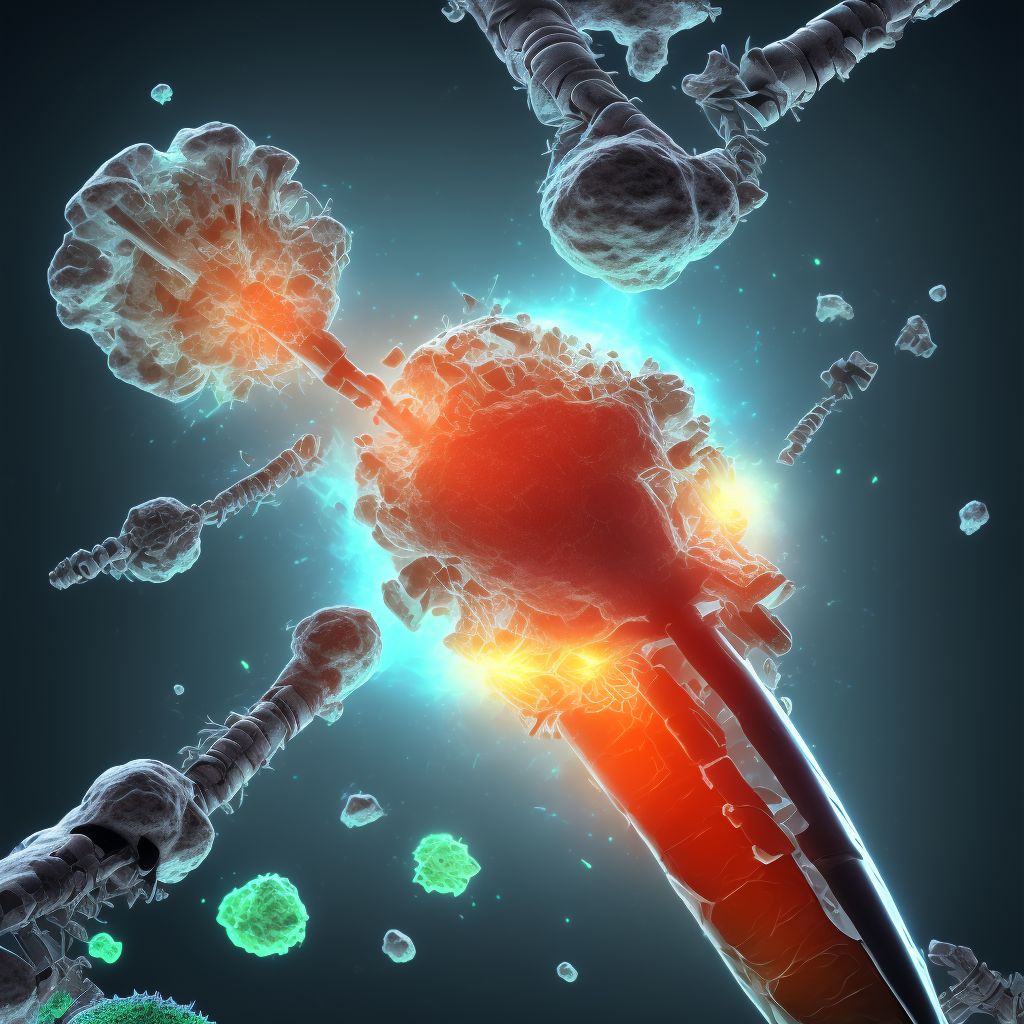
Nondisplaced segmental fracture of shaft of left tibia, subsequent encounter for closed fracture with nonunion Save
ICD-10 code: S82.265K
Disease category: S82.265: Nondisplaced segmental fracture of shaft of left tibia
Nondisplaced Segmental Fracture of Shaft of Left Tibia: Understanding Subsequent Encounters with Closed Fracture and Nonunion
A nondisplaced segmental fracture of the shaft of the left tibia is a specific type of fracture that requires medical attention. In this article, we will explore subsequent encounters related to closed fractures with nonunion, providing a brief overview of these conditions and their implications.
When a nondisplaced segmental fracture of the shaft of the left tibia occurs, it means the bone has broken into two or more fragments, but the pieces remain relatively aligned. This type of fracture is typically less severe compared to displaced fractures, where the bone fragments may shift or misalign.
Subsequent encounters refer to follow-up visits after the initial diagnosis of the fracture. These visits aim to monitor the healing progress, assess any complications, and provide appropriate care. However, it is important to note that this article does not cover specific treatment options for this condition.
- Post-fracture Evaluation: During subsequent encounters, healthcare professionals will evaluate the patient's progress since the initial diagnosis. This may involve assessing the range of motion, pain levels, and any signs of nonunion.
- Diagnostic Imaging: X-rays or other imaging techniques may be performed to determine the healing status of the fracture. These images can help identify any signs of nonunion, where the bone fails to heal within the expected timeframe.
- Monitoring Nonunion: If nonunion is suspected, further examination may be necessary to determine the underlying causes. This could involve evaluating the patient's overall health, nutrition, and potential contributing factors such as smoking or inadequate immobilization.
- Planning for Intervention: In cases where nonunion is confirmed, subsequent encounters may involve discussions about potential interventions to promote bone healing. These interventions could range from non-surgical methods, such as immobilization or electrical stimulation, to surgical procedures like bone grafting or fixation with hardware.
It is crucial for patients with a nondisplaced segmental fracture of the shaft of the left tibia to follow their healthcare provider's recommendations and attend subsequent encounters. Regular monitoring and appropriate interventions can help improve the chances of successful healing and minimize potential complications.
Remember, this article does not provide specific treatment advice for this condition. If you or someone you know is experiencing this type of fracture, consult a healthcare professional for accurate diagnosis and personalized treatment options.
Treatment of Nondisplaced segmental fracture of shaft of left tibia, subsequent encounter for closed fracture with nonunion:
Treatment Options for Nondisplaced Segmental Fracture of the Shaft of Left Tibia
A nondisplaced segmental fracture of the shaft of the left tibia can be a challenging condition to treat. However, there are several treatment options available that can help patients achieve a successful recovery and improve their quality of life.